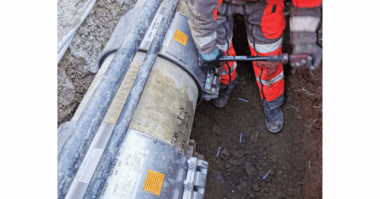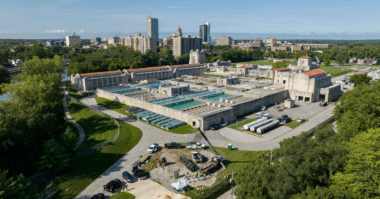When people hear the phrase “water treatment,” the first thought that comes to mind is taking water and removing any impurities, in the process making it safe to drink, bathe in and wash clothes with; in other words, “municipal” water treatment. But from a broader perspective, the term water treatment can have a number of completely different meanings.
In industrial applications, for instance, water can be taken from a nearby river and used for boiler or cooling-tower makeouts. In the oilfield, water that is used or produced during the drilling and recovery process can be treated and sold to farmers for use in field-irrigation activities. In other words, there’s a whole lot of water being treated at all times, and not just so a loving Mom can whip up a pitcher of lemonade for the kids.
Most of the water used or produced in industrial applications contains some level of solid particles. It goes without saying that these particles should not be consumed, but particle-laden water also can’t be used, for example, in a boiler that provides water to a turbine during power generation, lest the turbine become fouled and damaged.
Recognizing the presence of particulates in water and successfully removing them, however, are two different things. Some of the particles—which can be anything from bacteria and plant material to dirt or minuscule pieces of crushed stone—are so small that their response to gravity is very low. This means that it may take many hours, days or even weeks for them to settle as little as a foot.
In these situations, the water-treatment facility must turn to the introduction of a coagulant or flocculant that helps the tiny particles clump together in a mass that is called a “floc,” which is easier to remove. Two of the more popular types of coagulants/flocculants are:
- Alum. A more economical way to say “hydrated potassium aluminum sulfate,” alum has been used since Roman times to aid in the purification of drinking and industrial-process water. Alum coaxes negatively charged colloidal particles to clump together so they will be able to be more easily removed from settling bsins.
- Ferric chloride. Another name for Iron (III) chloride, ferric chloride undergoes hydrolysis when dissolved in water, which gives it the ability to form suspended particles into flocs.
While quite effective in creating flocs, the flocs that are formed by alum and ferric chloride are held together rather loosely, which means that they can break apart as they settle in the clarifier or settling basin. Eliminating this break-up potential requires the introduction of a liquid polymer that helps form tighter flocs. The use of alum also leads to generation of a large amount of sludge; the polymer also helps reduce that sludge level. The sludge that remains, though, still needs to be removed and disposed of.
This creates a three-stage water-treatment process that must work hand-in-hand: initial floc formation with alum and ferric chloride, clump-strengthening with polymer, and removal and disposal of the sludge.
Not all manufacturers are able to offer full lines of pumping and polymer-blending technology for the previously mentioned water-treatment applications. One company that is able to provide this combined solution is Neptune™ Chemical Pump Co., North Wales, PA, USA, a member of Dover Corporation’s Pump Solutions Group (PSG®), Oakbrook Terrace, IL. Neptune’s capabilities allow the water-treatment facility operator access to a “One Company. One Source.” solution that covers his needs from start to finish. For more detail on the available technology from Neptune please see the following:
- Neptune™ 7000 Series Mechanical Metering Pumps
- Fluid Dynamics™ dynaBLEND™ Liquid Polymer Blending Systems
- Abaque® Series Peristaltic (Hose) Pumps
We are always interested in hearing about any equipment-related successes you have had in any of your operations. If there are any recent instances where a metering pump, polymer-blending system or peristaltic (hose) pump helped optimize your capabilities in water-treatment applications, please send me an email at Kevin.hogue@psgdover.com.



